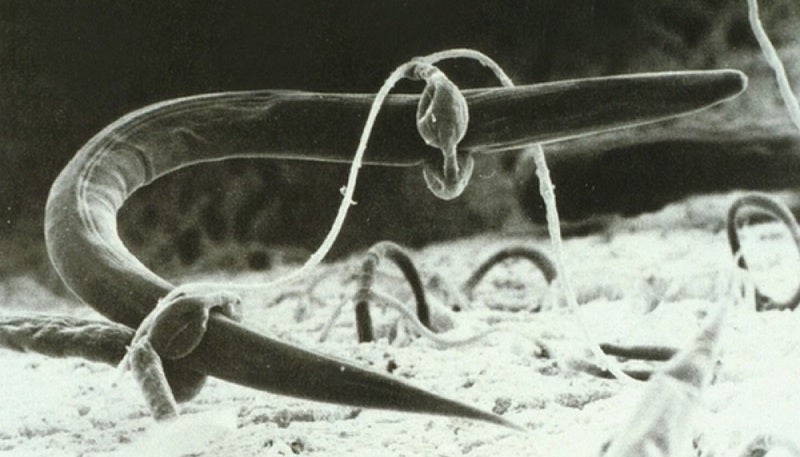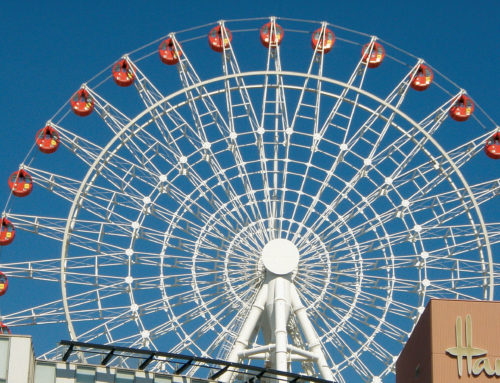By John Johanson ’10
It’s an utter maelstrom.
Thousands of creatures are diligently processing resources and fighting for survival, while vastly larger monsters devour them by the hundreds. The small specks of their bodies are visible in the monsters’ translucent bellies. Meanwhile, a web of other creatures builds roads and infrastructure, moving resources through an interconnected network far more complex than the internet. Other slender giants whip around, eating and smashing this web, though sometimes the web revolts and takes one down. And what about the colossi that eat those slender giants? We’ll leave them for another time.
It’s all taking place under a microscope lens — in one tiny frame of one tiny slide containing one tiny drop of water from one tiny scoop of healthy soil. Life is all around us, swirling in a process of creation, abundance, and destruction invisible to our naked eye1.
Many pre-Western cultures had deep respect and appreciation for the soil, and believed it was an integral and sacred part of existence. Over time, however, modern technological cultures began to view it more and more as an inert resource to control, reduce, and extract resources from. In the wake of the world wars, the U.S. had a massive surplus of industrial output, and new enemies were found on the home front — weeds, bacteria, insects, and more.
Well-meaning farmers have since annihilated these complex, interconnected systems at unprecedented rates with pesticides, inorganic fertilizers, and mechanical tilling, while unforeseen consequences such as erosion, subsidence, and climate chaos continue to slide out of control2. We (collectively, as the part of humanity engaged in industrial civilization) have put ourselves in an arms race with Mother Nature, when we could be pulling up a chair and getting to know her.
Through the precision of modern science and the practice of regenerative agriculture, we now know that we’ve been shadow-boxing with an enemy we never understood. By wiping out complex ecosystems in these ways, we reduce yields and resilience, and generate immense downstream problems, such as greenhouse gas pollution, topsoil loss, and the poisoning of the Earth’s waters3. We’re waging war against forces that are out of our league, a misstep that is part of a wave that threatens the fundamental structure of our civilization if we don’t quickly learn4.
The most regal and productive ecosystems in the world, like the redwoods or rainforests, never needed our technologies or chemicals to flourish; they evolved over thousands of years on their own. When in balance, healthy soils and food webs like those that occur in nature can actually help us manage weeds, pests, and other forces we’ve so direly — and unsuccessfully — tried to eradicate5.
As we learn these lessons in the context of our climate and ecological crisis6, I believe it is critical for the creators, designers, and engineers who help construct the world around us to listen to and engage with the mysteries of the natural world before trying to “fix” anything. Often, what we think of as problems might be solutions in disguise, and if we “solve” them too quickly, we may find ourselves dealing with vast and unforeseen consequences. Our industrialized relationship with soil is a striking example of where we’ve failed to do this, and are suffering the consequences.
What if our philosophies, and therefore technologies, were geared toward cooperation and learning within Earth’s complex systems, rather than toward the domination, reduction, and extraction from them?
_
Sources:
- Elaine Ingham, “Soil Food Web,” United States Department of Agriculture, https://www.nrcs.usda.gov/wps/portal/nrcs/detailfull/soils/health/biology/?cid=nrcs142p2_053868.
- Patrick Kunkel, “Environmental Impacts of Industrial Agriculture,” https://storymaps.arcgis.com/stories/ab3d74759b8e43c1a85dfd4e3741e33a.
- “How Industrial Agriculture Affects Our Soil,” FoodPrint, https://foodprint.org/issues/how-industrial-agriculture-affects-our-soil/.
- Asher Moses, “‘Collapse of Civilisation is the Most Likely Outcome’: Top Climate Scientists,” Resilience, https://www.resilience.org/stories/2020-06-08/collapse-of-civilisation-is-the-most-likely-outcome-top-climate-scientists/
- Elaine Ingham, “Food Web & Soil Health,” United States Department of Agriculture, https://www.nrcs.usda.gov/wps/portal/nrcs/detailfull/soils/health/biology/?cid=nrcs142p2_053865.
- “Farming Our Way Out of the Climate Crisis,” Project Drawdown, 2020, https://drawdown.org/sites/default/files/pdfs/DrawdownPrimer_FoodAgLandUse_Dec2020_01c.pdf.
Image Credit: Soil Food Web Institute
To learn more about Johanson, visit http://jejohanson.com/.




